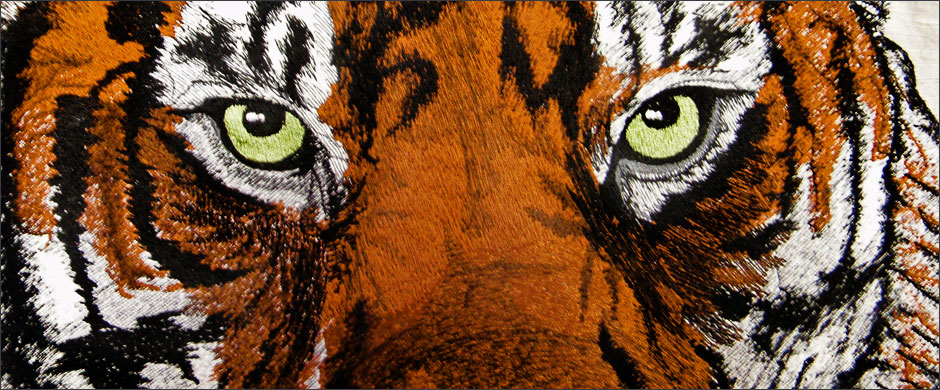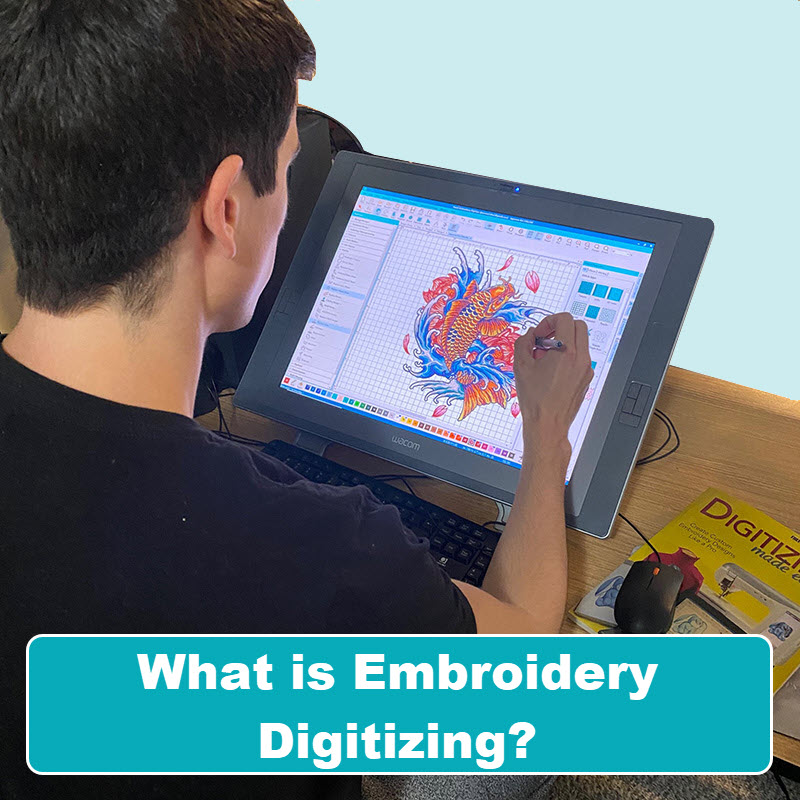Streamlining the Art of Embroidery Digitizing: Step-by-Step Guide
Needlework digitizing is a thorough craft that requires precision and creativity. As technology proceeds to breakthrough, the digitization procedure has ended up being much more available, enabling lovers to bring their complex layouts to life with convenience. In this overview, we will certainly untangle the complexities of needlework digitizing, damaging down each step systematically to improve the process and empower both beginners and experienced embroiderers alike. Remain tuned to find just how you can simplify this complex art type and change your imaginative visions into beautifully stitched masterpieces.
Understanding Needlework Digitizing Software Program
Needlework digitizing software works as a vital tool for changing detailed styles into electronic formats suitable with needlework machines, promoting precise stitching and modification. This specialized software enables individuals to import numerous photo file formats, such as JPG or PNG, and convert them right into needlework machine-readable formats like DST, EXP, or PES - Digitizing for Embroidery. By using functions like stitch editing, underlay choices, and string shade selection, digitizing software program enables customers to control every element of the layout process
Additionally, progressed embroidery digitizing software application uses tools for creating complicated styles, adjusting stitch thickness, and incorporating detailed details. Individuals can additionally preview the style prior to sewing it out, making certain accuracy and minimizing errors. Furthermore, many software application provide automatic attributes that aid streamline the digitizing process, conserving effort and time.
Recognizing the capabilities of embroidery digitizing software application is essential for achieving high-quality cause embroidery projects. By grasping this tool, needlework fanatics and professionals can unleash their creative thinking and bring intricate designs to life with precision and efficiency.

Choosing the Right Style File
After familiarizing on your own with the capacities of needlework digitizing software program, the following important action in the process is picking the appropriate layout apply for your job. Digitizing for Embroidery. When choosing a layout declare needlework digitizing, it's important to take into consideration the complexity of the design, the size of the end product, and the kind of material you will be working with
For elaborate styles with fine details, a high-resolution image or vector file is recommended to guarantee that the needlework equipment can properly reproduce the design. Additionally, the size of the final product plays a considerable role in choosing the ideal style documents. Larger styles may need greater resolution documents to keep clearness and sharpness.
Additionally, the kind of material you will certainly be stitching on influences the option of layout file. Different textiles may need changes in the design data to make certain that the stitches are properly lined up and the layout looks like intended. By meticulously selecting the best layout file based on these variables, you can set on your own up for an effective embroidery digitizing procedure.
Digitizing Tools and Methods
Utilizing specialized software program and precision strategies, digitizing tools are important in changing elaborate layouts into embroidery-ready documents. Embroidery digitizing software program, such as Wilcom, Hatch, or Embrilliance, offers the essential platform to convert artwork into stitch information. These programs offer functions like stitch editing, padding options, and lettering tools to make sure the style converts effortlessly onto material.
Among the vital strategies in digitizing is developing a clear path for the embroidery machine to follow. This involves digitizing each element of the design with precision, figuring out stitch kinds, thickness, and instructions. By utilizing devices like digitizing tablet computers or software-specific plugins, embroiderers can achieve a high level of precision in their digitized layouts.
Furthermore, understanding the art of underlay sewing is crucial for creating why not look here top quality needlework. Underlay stitching supports the fabric and develops a structure for the design, guaranteeing that the end product is both aesthetically attractive and lasting. By understanding these digitizing devices and methods, embroiderers can elevate their craft and bring intricate styles to life with precision and performance.
Personalizing Stitch Types and Instructions
Having actually established a foundation in digitizing devices and strategies, a critical facet beforehand embroidery workmanship depends on tailoring stitch kinds and directions with precision and purpose. The selection of stitch types can significantly impact the overall appearance and structure of the embroidered style. Satin stitches, known for their smooth and shiny surface, job well for producing borders and text. On the various other hand, fill stitches are ideal for covering bigger areas efficiently. By more information tactically combining these stitch kinds, embroiderers can achieve depth and measurement in their designs.
Furthermore, the instructions of stitches plays an essential duty in boosting the visual allure of the last embroidery. Diverse stitch instructions can add structure, emphasize particular components, and create visual rate of interest. For example, changing the angle of stitches can imitate motion or natural patterns like fur or plumes. By try out various stitch angles and patterns, embroiderers can bring their styles to life with amazing information and complexity. Grasping the art of personalizing stitch kinds and directions equips embroiderers to unleash their creative thinking and raise the quality of their work.
Testing and Refining Your Digitized Layout
To ensure the accuracy and top quality of your digitized design, complete testing and improvement are essential steps in the embroidery digitizing procedure. As soon as you have completed the digitization of your style, it is critical to test it before waging the actual embroidery. Checking allows you to identify any kind of possible problems such as thread breaks, sew thickness issues, or design distortions that Web Site may influence the last result.

After testing, it is crucial to fine-tune your digitized layout based upon the responses from the examination sew-out. This might involve tweaking sew setups, adjusting densities, or making modifications to the general design to accomplish the preferred result. By repeating via screening and improvement, you can fine-tune your digitized layout to perfection before progressing with the real needlework process.
Final Thought
In final thought, grasping the art of needlework digitizing requires a detailed understanding of the software program, selecting the appropriate style file, using digitizing tools and methods, customizing stitch kinds and directions, and screening and refining the digitized layout. By following these actions, embroiderers can simplify the digitizing procedure and create high-grade embroidered layouts with accuracy and effectiveness.